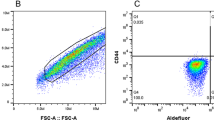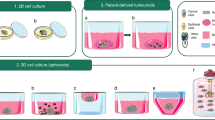Abstract
The potential use of human head and neck (H & N) tumours, growing in athymic nude mice, for preclinical assessment of cytostatic drug sensitivity in a soft agar cloning system was examined. Of 20 H & N tumour xenografts, obtained from 6 different xenograft lines, 17 demonstrated sufficient colony growth to evaluate in vitro drug sensitivity. Moreover, all xenografts provided enough cells to test 8 cytostatic drugs at 3 concentrations each. A dose-dependent inhibition of colony growth was obtained with all drugs tested, except methotrexate. Tumours were considered sensitive when the drug concentration required to inhibit colony formation by 50%, was less than 1/10 of the peak plasma concentration in patients. All H & N tumour lines were resistant to cisplatin, doxorubicin, hydroxyurea, mafosfamide (an in vitro active analogue of cyclophosphamide) and methotrexate. Bleomycin was active in 1/6 and 5-fluorouracil in 6/6 of the H & N tumour lines tested. In 32 cases the in vitro data of the H & N tumour lines and a chemosensitive rat rhabdomyosarcoma were compared directly with in vivo results obtained in nude mice. The clonogenic assay correctly predicted sensitivity in 4/6 (66.7%) and resistance in 21/26 (80.8%) of the cases. A lack of correlation was noted for methotrexate, 5-fluorouracil and cyclophosphamide. in vitro culture of human H & N xenografts may provide a means for a rapid and large scale screening to identify new drugs active against H & N malignancies. In addition the clonogenic assay may help to select drugs for subsequent testing in the nude mouse xenograft model. The lack of correlation for some drugs in the present study indicates that there are some limitations in the use of xenograft tumour material for in vitro testing of new drugs.
This is a preview of subscription content, access via your institution
Access options
Subscribe to this journal
Receive 24 print issues and online access
$259.00 per year
only $10.79 per issue
Buy this article
- Purchase on Springer Link
- Instant access to full article PDF
Prices may be subject to local taxes which are calculated during checkout
Similar content being viewed by others
Rights and permissions
About this article
Cite this article
Boerrigter, G., Heinerman, E., Braakhuis, B. et al. Chemosensitivity of human head and neck cancer xenografts in the clonogenic assay and in nude mice. Br J Cancer 54, 53–59 (1986). https://doi.org/10.1038/bjc.1986.151
Issue Date:
DOI: https://doi.org/10.1038/bjc.1986.151



